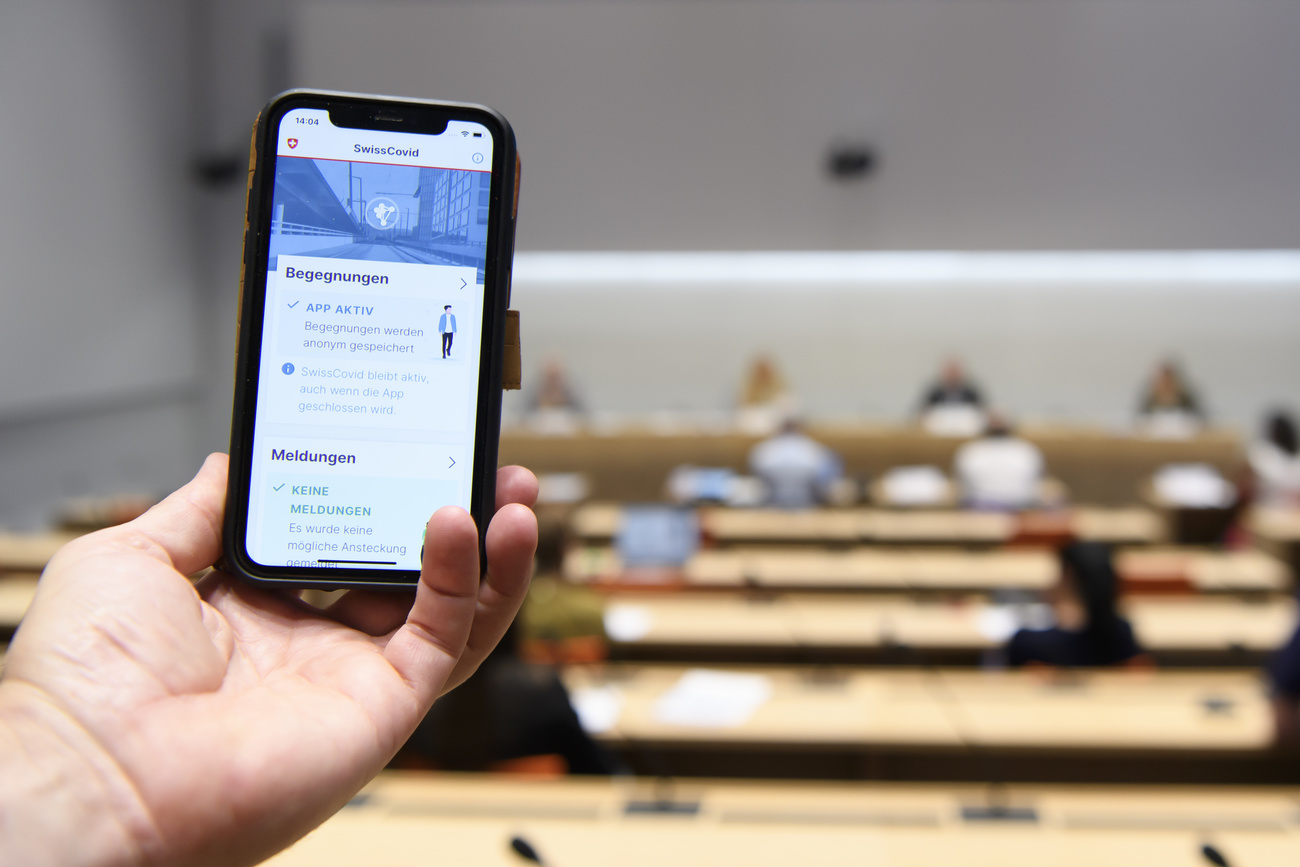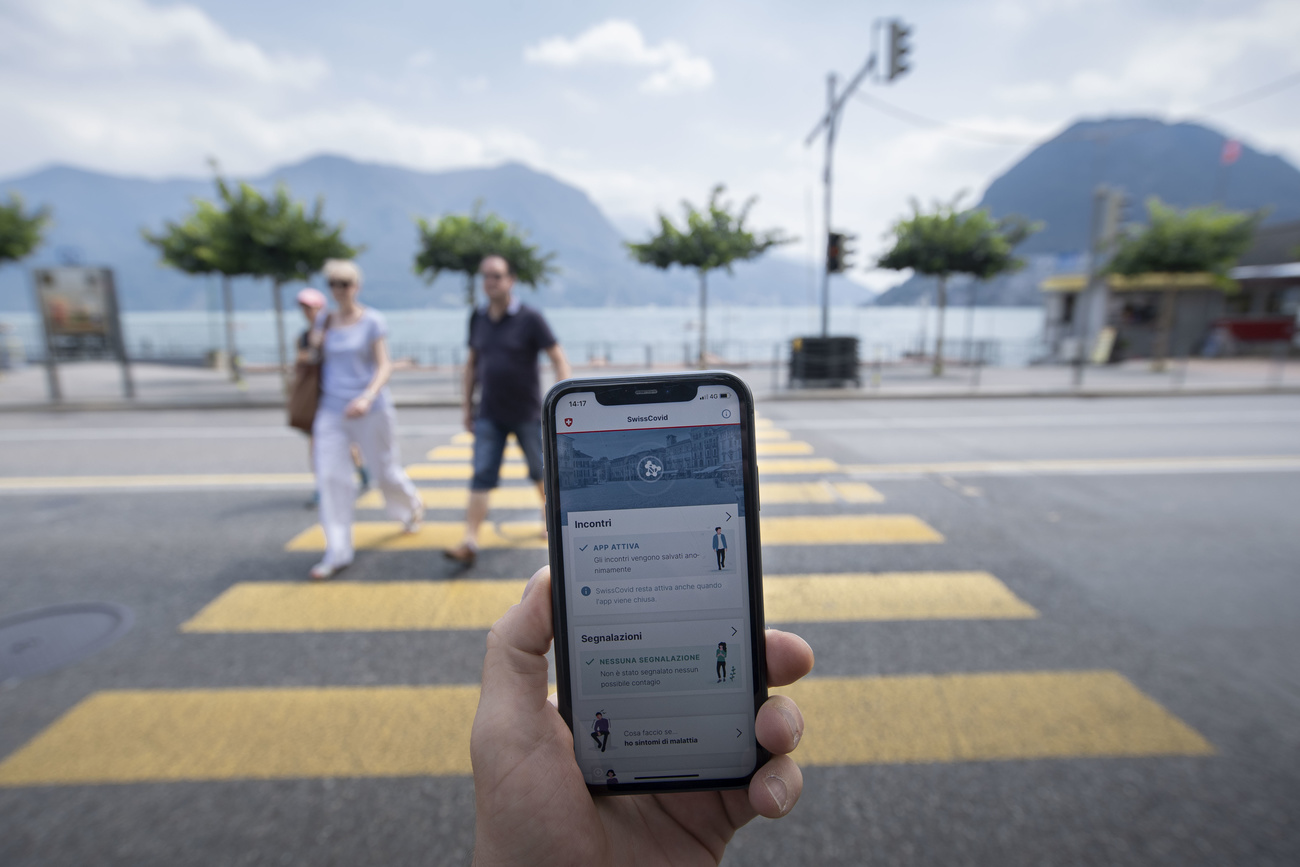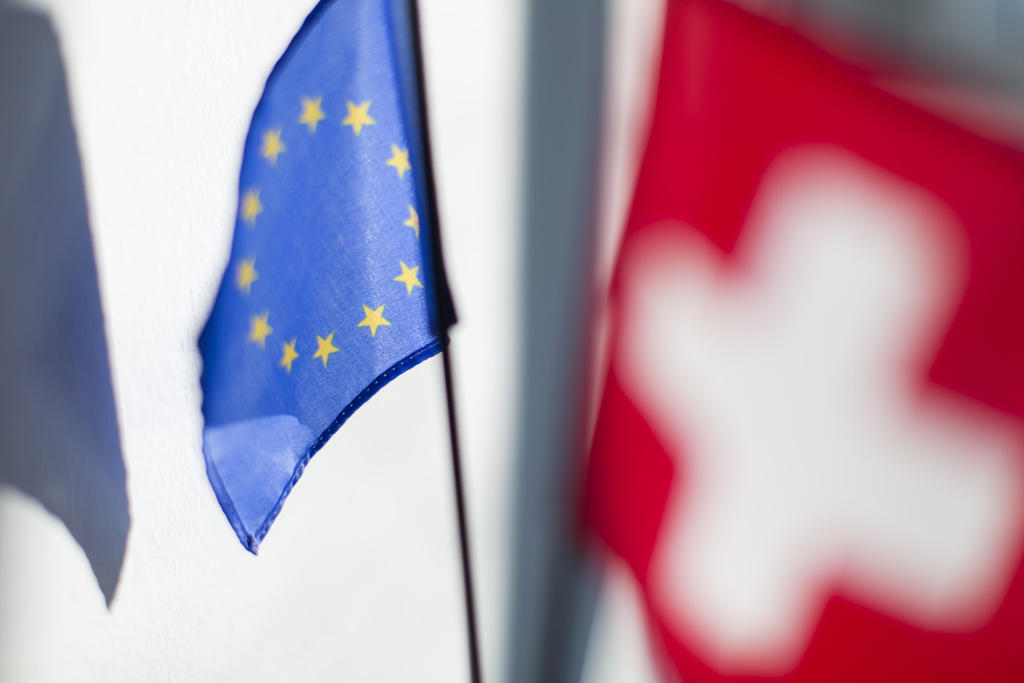Contact-tracing apps: good allies against the pandemic?

With the arrival of the second wave of Covid-19, Swiss and international authorities are insisting on the need for digital tracing to slow the spread of the virus. Can it work?
Since early October there has been a dizzying increase in Covid-19 infections in Switzerland, with new infections now exceeding 3,000 a day.

More
Coronavirus: the situation in Switzerland
In this context the federal authorities are urging the public to download the SwissCovid contact-tracing app – a system that has sparked concern and criticism, like similar applications in the rest of Europe.
So far, SwissCovid has been downloaded by about 2.5 million people – still far below 60% of the population, the figure considered essential by some experts to ensure the effectiveness of contact tracing.
“We have proof that the app works,” says Sang-il Kim, head of the digital transformation division at the Federal Office of Public Health. He explains that since June more than 100 people who tested positive did so after receiving a warning from the app.
In addition, SwissCovid has recently seen a doubling of notifications followed by calls to dedicated hotlines. “From our indicators we know that [two weeks ago] around 300 people were alerted by the app, while [last week] the number rose to over 600 people. The growth of the virus is exponential and the situation is becoming dramatic,” Kim warns, adding that a new campaign will help raise awareness of the importance of using this tracking tool.

More
Top epidemiologist urges greater uptake of contact-tracing app
New app
Meanwhile the Swiss Federal Institute of Technology Lausanne (EPFL) is working on an app which uses a QR code to track people at places like restaurants, bars and private parties. It would send individual notifications to anyone exposed to an infected person.
Like SwissCovid, this system, called CrowdNotifier, is based on a decentralised and privacy-friendly protocol, but the goal is to use the QR code to send anonymous notifications to everyone who has been in the presence of an infected person, and not just those who spent at least 15 minutes within one-and-a-half metres.
“With this app we want to propose a cryptographic protocol that enables extremely effective communication with public authorities and everyone present at a given event, while at the same time ensuring that privacy is respected,” Edouard Bugnion, vice-president of information systems at EPFL and member of the government’s Covid-19 taskforce, told swissinfo.ch.
A solution that, together with the tracing app, aims to boost virus containment strategies. “But the combination of different measures remains the cocktail that gives the best results,” he adds.
Keeping up with neighbours
With no magic formula against the virus, the authorities in Switzerland and abroad insist on the combination of barriers, contact tracing and quarantine to contain the spread.
In mid-October French President Emmanuel Macron announced that France’s StopCovid app wasn’t working and that it would be replaced with a new version called “Tous anti-Covid” (Everyone against Covid) on October 22. While admitting the failure of the French app compared with British and German ones, he also pointed out that “no one has been able to make a real warning tool” – referring to the low number of notifications throughout Europe.

More
Majority of Swiss reluctant to download contact tracing app
Faced with the increase in cases, Italian Prime Minister Giuseppe Conte has also reiterated the importance of digital tracking in the virus control chain. “The app facilitates contact tracing and, while it is optional, there is certainly a moral obligation to contribute to this programme,” he said at the beginning of October during the launch of a campaign to promote the Immuni app.
“The app doesn’t save us from the pandemic, but unlike manual contact tracing it is a faster alert-and-control system and is less expensive and intrusive,” explains Ciro Cattuto, coordinator of a federal Italian team harnessing technology to manage the emergency. “Downloading it is an act of responsibility and civic duty,” he says.
Cattuto cites a study published by Swiss colleagues showing that digital tracking is already beginning to bear fruit and that its effectiveness is close to that of the manual method. “This proves that apps, if well integrated into national healthcare systems as in the Swiss case, have an incremental effectiveness compared to their use. The 60% threshold was a misinterpretation of a study published by the University of Oxford,” Cattuto points out.
Dialogue between apps
In this babble of systems, rules, thresholds and recommendations, a fundamental point is still missing: interoperability between the various solutions.
The European Commission already moved in this direction in May, publishing the guidelines for European contact-tracing apps – an effort coordinated by a group of member states called the eHealth Network. In mid-September testing began on the European gateway service, set up to ensure a dialogue between apps. In this first phase countries such as the Czech Republic, Denmark, Germany, Ireland, Italy and Latvia participated.
Through this European gateway Italy’s Immuni app has started communicating with solutions developed in Ireland and Germany. “It was a very interesting process that led us to this point,” says Paolo de Rosa, chief technology officer at Italy’s department for digital transformation.
De Rosa underlined the great merit of the eHealth Network in enabling a constructive comparison of the different systems across Europe. “Everyone has been able to learn from their mistakes and address common problems in a more structured way, including with the two operating system manufacturers Google and Apple.”
What about Switzerland? “We are a few weeks away from the solution,” says Bugnion, noting that the government is working with 12 European countries on an interoperability solution.
What is missing, he says, is a bilateral or multilateral political agreement to define the perimeter of the borders between countries. As a non-EU member, Switzerland is in the middle of difficult negotiations for its framework institutional agreement with the 27-nation bloc.

More
What is this EU framework deal?

In compliance with the JTI standards
More: SWI swissinfo.ch certified by the Journalism Trust Initiative










You can find an overview of ongoing debates with our journalists here . Please join us!
If you want to start a conversation about a topic raised in this article or want to report factual errors, email us at english@swissinfo.ch.